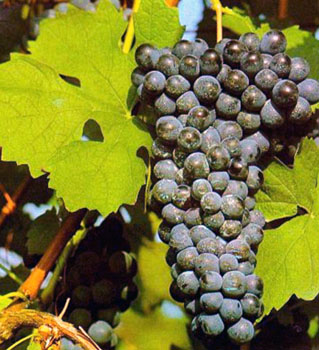
Grape Glossary
Barbera was formerly meant to be drunk upon release, with crisp acidity offset by rustic notes. Today’s winemakers are crafting seriously structured Barberas meant to age. Good vintages from better microclimates are medium in body and age well over the mid-term, either with or without oak contact, which typically gives a vanilla character to the wine.
Barbera’s highest quality is achieved in Piedmont’s cooler climate and chalk and manganese soils, where it occupies more than half the vineyard area. It is a reliable and hardy vine that produces well in warm to hot climates. Piedmont’s extended growing season brings Barbera’s fruit and tannins into balance.
The Barbera vine is native to Italy’s Piedmont, most likely from the hills of Monferrato, where it was documented as early as the 13th century. It is currently the third most planted grape in Italy after Sangiovese and Montepulciano.

